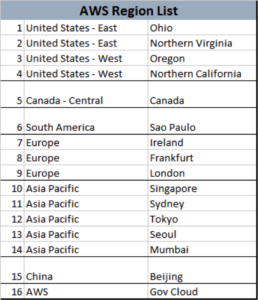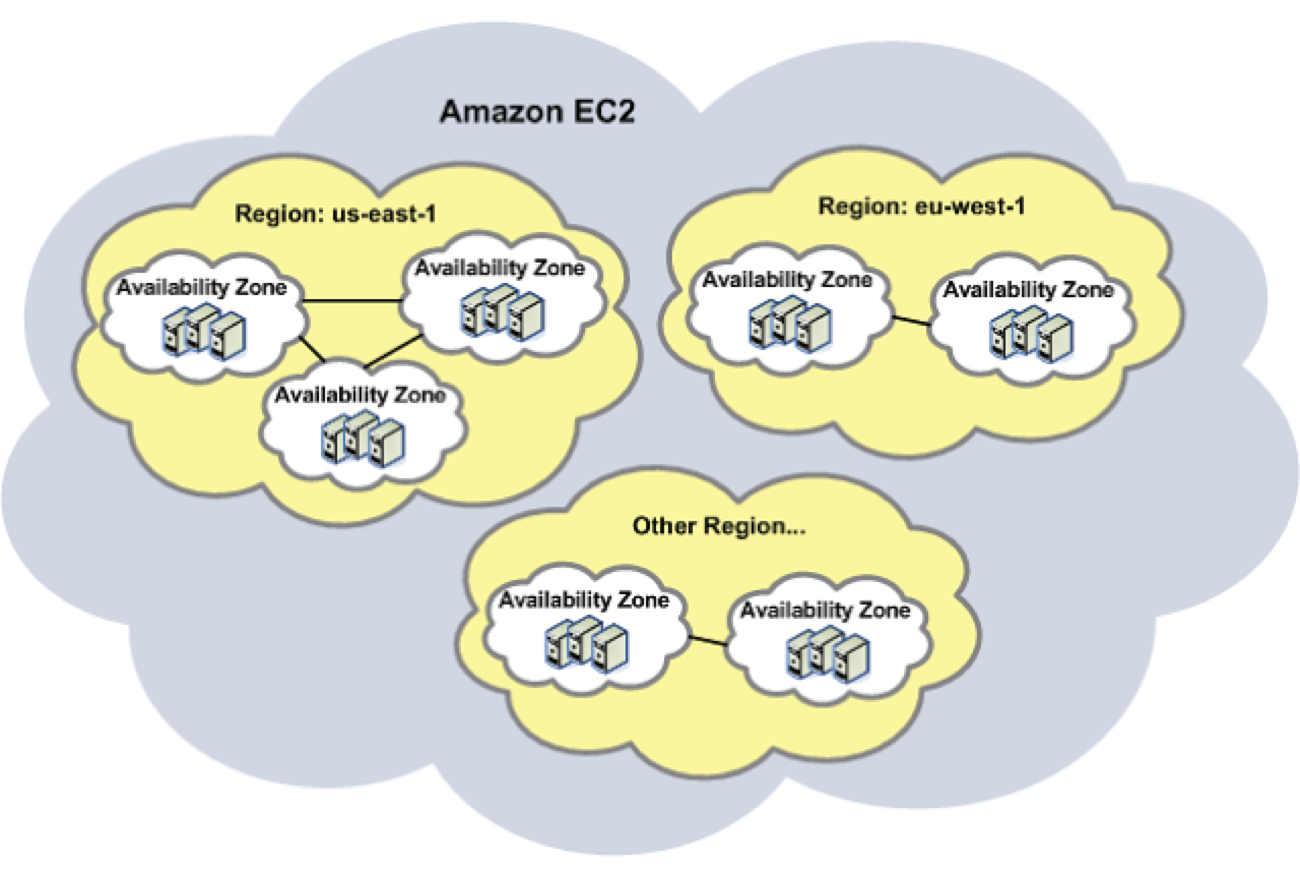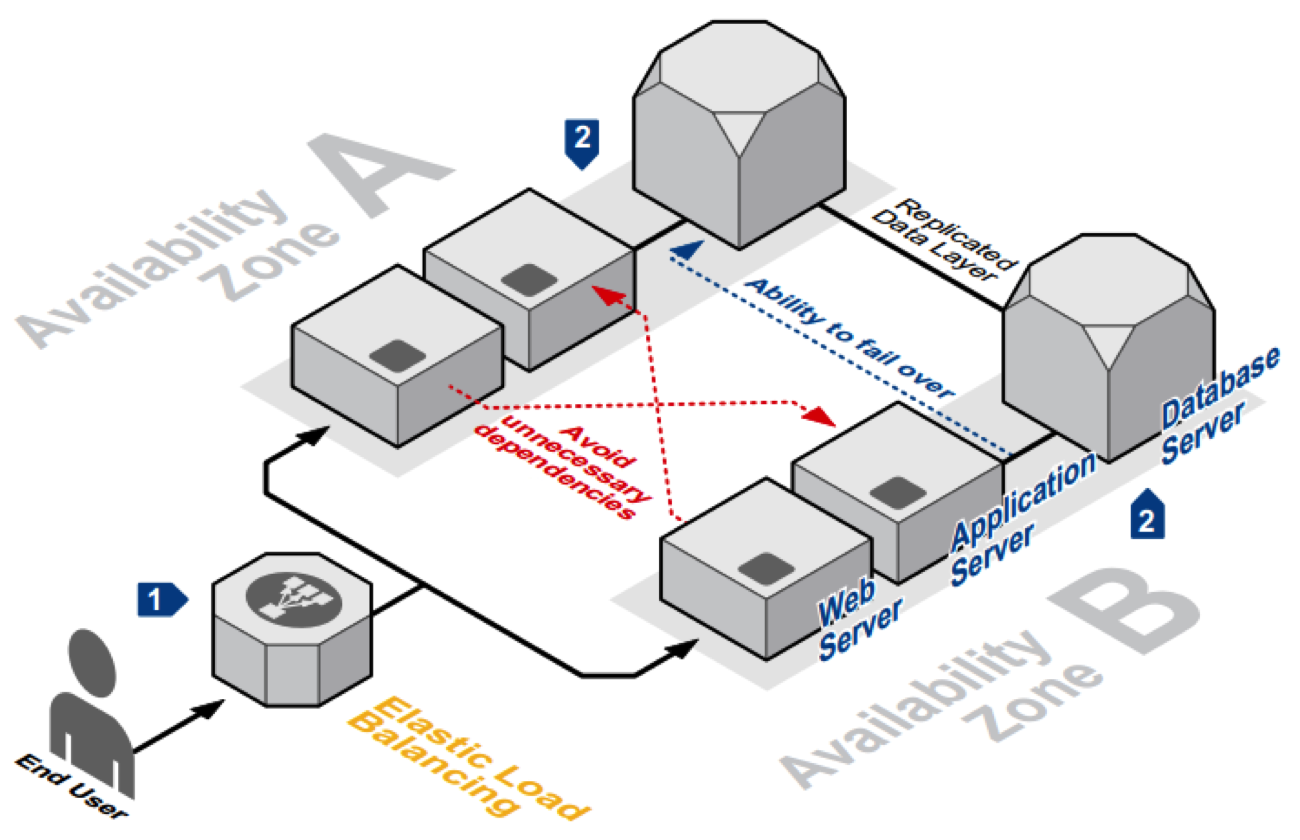Datacenter footprint is extremely important for any cloud infrastructure provider. Amazon AWS, Microsoft, IBM, Oracle and Google are constantly building datacenters around the world. The ever-increasing demand for infrastructure services means that this trend is only going to continue over the next several years.
Amazon’s global infrastructure has a unique architecture because it is built across the globe in what AWS calls “Regions”, with each Region having multiple “Availability Zones” and each availability zone having one or more datacenters. Amazon has 16 geographic Regions around the world, with 42 Availability Zones spread around them.
Why has Amazon architected it this way? The answer comes from them:
“Each Amazon EC2 region is designed to be completely isolated from the other Amazon EC2 regions. This achieves the greatest possible fault tolerance and stability.” – Amazon

List of Amazon Global Infrastructure Regions as of February 2017

Now, within each of these Regions, Amazon has built multiple Availability Zones. Amazon says this allows customers to deploy applications across multiple Availability Zones in the same region and improve performance, fault tolerance and low latency.
Availability Zones are connected to each other through private fiber optic networking, so that applications can automatically fail-over between zones without any interruption.


Here’s Amazon’s own description of how this has been set up:
“AWS Regions are comprised of Availability Zones, which refer to technology infrastructure in separate and distinct geographic locations with enough distance to significantly reduce the risk of a single event impacting availability, yet near enough for business continuity applications that require rapid failover.
Each Availability Zone has independent power, cooling, physical security, and is connected via redundant, ultra-low-latency networks.
AWS customers focused on high availability can architect their applications to run in multiple Availability Zones to achieve even higher fault-tolerance.”
The common practice in the IT world is to host the application in one geographic location and have a backup in another geographic location. Amazon has added another layer to this concept, by creating a model where hosting and backups happen within the same region across their Availability Zones. Nothing is going to stop companies from replicating data across Regions, and they will continue to do so anyway.
So Why Even Bother with Availability Zones?

First of all, Availability Zones are connected to each other with fast, private fiber-optic networking that increases the speed of data transfer many times over compared to public internet connections. Cloud service providers allow customers to establish dedicated network connection from their premises to the datacenter, increasing bandwidth throughput while reducing network costs.
Both Microsoft and AWS offer such a solution:
“Azure ExpressRoute lets you create private connections between Azure data centres and infrastructure on your premises or in a co-location environment. ExpressRoute connections don’t go over the public Internet. They offer more reliability, faster speeds, lower latencies and higher security than typical Internet connections. In some cases, using ExpressRoute connections to transfer data between on-premises systems and Azure can yield significant cost benefits.” – Microsoft Azure
“Network latency over the Internet can vary given that the Internet is constantly changing how data gets from point A to B. With AWS Direct Connect, you choose the data that utilizes the dedicated connection and how that data is routed which can provide a more consistent network experience over Internet-based connections. AWS Direct Connect makes it easy to scale your connection to meet your needs. AWS Direct Connect provides 1 Gbps and 10 Gbps connections, and you can easily provision multiple connections if you need more capacity.” – Amazon Web Services (AWS)
The direct connection option, coupled with Availability Zones connected to each other using private connections, literally takes the speed and bandwidth throughput of public internet connections out of equation. What this does is that it leads to low disruption, higher speed, enhanced safety and lower costs.
It was a very simple model, but when you look at it closely, the benefits for the company as well as the customer are considerable.
But there is also a disadvantage with this type of architecture. What if a datacenter in particular Availability Zone fails? In such a case, all customer who have their data in that particular datacenter will have to move over to the next available one within that Zone. That could lead to capacity issues, but we’re certain that AWS has taken that into consideration when designing their global infrastructure.
Either way, the pros far outweigh the cons – and by a wide margin, too. That’s why AWS Availability Zones make a lot of sense.
We could pull on that thread and talk about data residency issues that a lot of companies like banks will definitely bring up as a deterrent to moving to the cloud. With AWS, that hurdle is far less daunting because the company can use the Availability Zones to create backups, while still not having their data forcibly migrated to other geographies in the event of a disaster.
There are several other use cases where the Availability Zone approach is ideal. As such, we strongly believe that Amazon is thinking years ahead of the status quo, and is already planning for mass cloud migrations over the next several years.
Thanks for reading our work! We invite you to check out our Essentials of Cloud Computing page, which covers the basics of cloud computing, its components, various deployment models, historical, current and forecast data for the cloud computing industry, and even a glossary of cloud computing terms.



